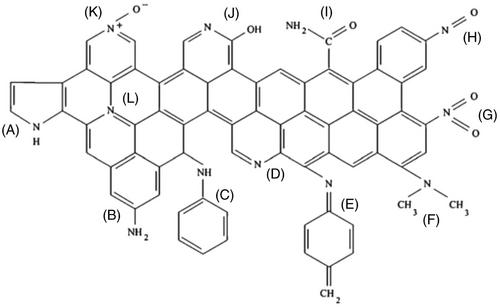下载PDF
{"title":"Prospects of low-temperature solid sorbents in industrial CO₂ capture: A focus on biomass residues as precursor material","authors":"Nausika Querejeta, María Victoria Gil, Fernando Rubiera, Covadonga Pevida","doi":"10.1002/ghg.2210","DOIUrl":null,"url":null,"abstract":"<p>Adsorption using bio-based adsorbents has been pointed out as an economical and environmentally benign technology for CO₂ gas separation and storage. A bio-based adsorbent can be fabricated from low-cost worldwide available biomass feedstock and bio-wastes from different industries (e.g., dairy manure, forestry, agriculture). As a result, it is a carbon rich material of hydrophobic nature, activated to gain high porosity development, and requires mild regeneration conditions. However, large-scale deployment of bio-based adsorption processes remains challenging. Our group has been intensively developing biomass-based adsorbents in conjunction with the design of tailored CO₂ adsorption-based cyclic processes for the envisioned application. Herein, key concepts on adsorption technology, biomass waste management, and different activation techniques for biomass-based adsorbent precursors are discussed. This review addresses the most relevant studies in the literature, from lab experimentation on a milligram scale (volumetric and gravimetric tests) to dynamic tests in bench or large-scale cyclic adsorption processes (i.e., pressure swing adsorption, temperature swing adsorption, vacuum swing adsorption). Therefore, the main target is to give a holistic view of the industrial applications where CO₂ separations with these materials are more suitable. Finally, concluding remarks and future perspectives of bio-based adsorbents in carbon capture are presented. © 2023 The Authors. <i>Greenhouse Gases: Science and Technology</i> published by Society of Chemical Industry and John Wiley & Sons Ltd.</p>","PeriodicalId":12796,"journal":{"name":"Greenhouse Gases: Science and Technology","volume":"13 2","pages":"245-284"},"PeriodicalIF":2.7000,"publicationDate":"2023-03-27","publicationTypes":"Journal Article","fieldsOfStudy":null,"isOpenAccess":false,"openAccessPdf":"https://onlinelibrary.wiley.com/doi/epdf/10.1002/ghg.2210","citationCount":"1","resultStr":null,"platform":"Semanticscholar","paperid":null,"PeriodicalName":"Greenhouse Gases: Science and Technology","FirstCategoryId":"93","ListUrlMain":"https://onlinelibrary.wiley.com/doi/10.1002/ghg.2210","RegionNum":4,"RegionCategory":"环境科学与生态学","ArticlePicture":[],"TitleCN":null,"AbstractTextCN":null,"PMCID":null,"EPubDate":"","PubModel":"","JCR":"Q3","JCRName":"ENERGY & FUELS","Score":null,"Total":0}
引用次数: 1
引用
批量引用
Abstract
Adsorption using bio-based adsorbents has been pointed out as an economical and environmentally benign technology for CO₂ gas separation and storage. A bio-based adsorbent can be fabricated from low-cost worldwide available biomass feedstock and bio-wastes from different industries (e.g., dairy manure, forestry, agriculture). As a result, it is a carbon rich material of hydrophobic nature, activated to gain high porosity development, and requires mild regeneration conditions. However, large-scale deployment of bio-based adsorption processes remains challenging. Our group has been intensively developing biomass-based adsorbents in conjunction with the design of tailored CO₂ adsorption-based cyclic processes for the envisioned application. Herein, key concepts on adsorption technology, biomass waste management, and different activation techniques for biomass-based adsorbent precursors are discussed. This review addresses the most relevant studies in the literature, from lab experimentation on a milligram scale (volumetric and gravimetric tests) to dynamic tests in bench or large-scale cyclic adsorption processes (i.e., pressure swing adsorption, temperature swing adsorption, vacuum swing adsorption). Therefore, the main target is to give a holistic view of the industrial applications where CO₂ separations with these materials are more suitable. Finally, concluding remarks and future perspectives of bio-based adsorbents in carbon capture are presented. © 2023 The Authors. Greenhouse Gases: Science and Technology published by Society of Chemical Industry and John Wiley & Sons Ltd.
低温固体吸附剂在工业二氧化碳捕集中的应用前景。关注生物质残渣作为前体材料
利用生物基吸附剂进行吸附是一种经济、环保的CO₂气体分离与储存技术。生物基吸附剂可以由低成本的世界范围内可用的生物质原料和来自不同行业(例如,奶牛粪便,林业,农业)的生物废物制成。因此,它是一种疏水性的富碳材料,通过活化获得高孔隙度的发育,并且需要温和的再生条件。然而,大规模部署生物基吸附工艺仍然具有挑战性。我们的团队一直在集中开发基于生物质的吸附剂,并为预期的应用设计量身定制的基于CO₂吸附的循环过程。本文讨论了吸附技术的关键概念、生物质废弃物管理以及生物质基吸附前驱体的不同活化技术。本文综述了文献中最相关的研究,从毫克级的实验室实验(体积和重量测试)到台架或大规模循环吸附过程的动态测试(即变压吸附、变温吸附、变真空吸附)。因此,主要目标是对工业应用提供一个整体视图,在这些应用中,用这些材料分离CO₂更合适。最后,对生物基吸附剂在碳捕集中的应用进行了总结和展望。©2023作者。温室气体:科学与技术,化学工业学会和约翰·威利出版社出版;子有限公司
本文章由计算机程序翻译,如有差异,请以英文原文为准。



